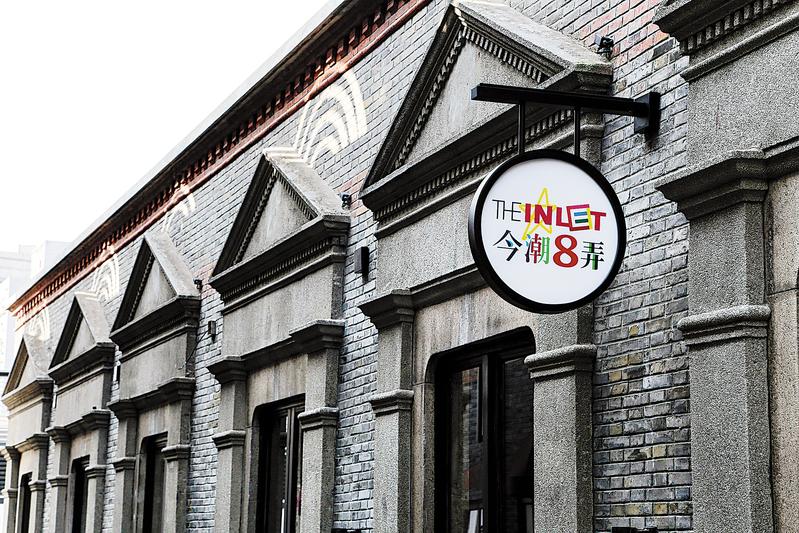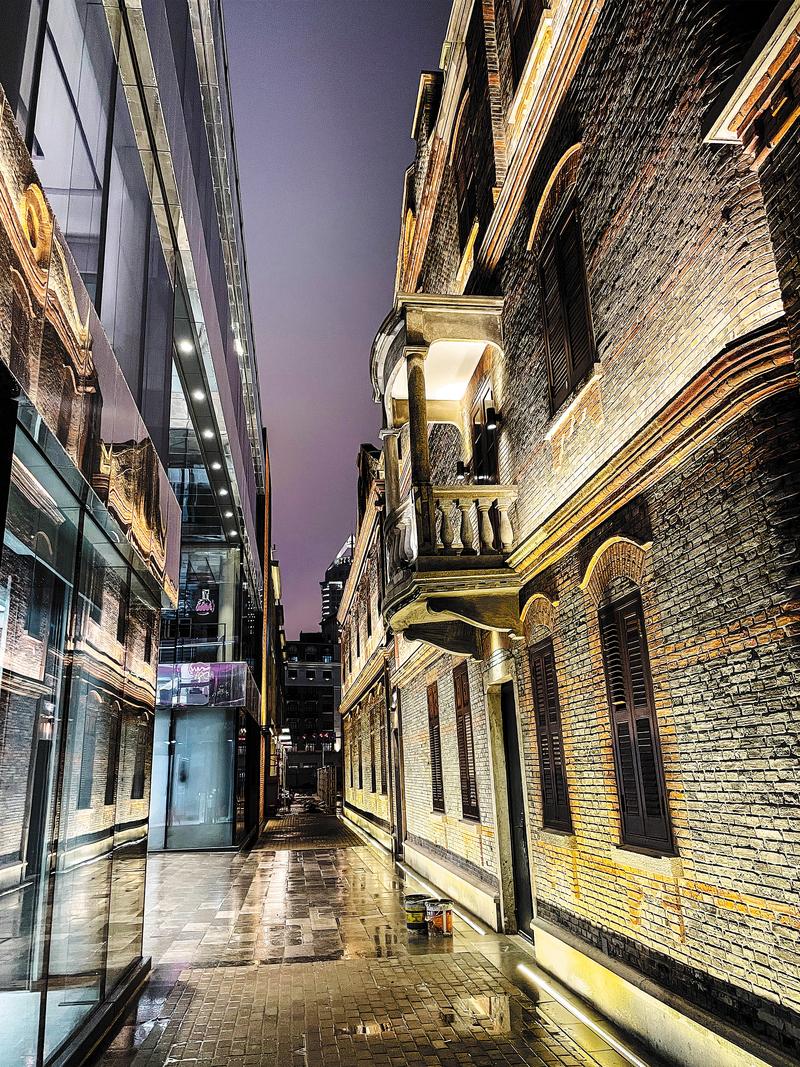 The INLET in Shanghai's Hongkou district has become a new cultural hot spot after reopening to the public following three years of renovation. (PHOTO PROVIDED TO CHINA DAILY)
The INLET in Shanghai's Hongkou district has become a new cultural hot spot after reopening to the public following three years of renovation. (PHOTO PROVIDED TO CHINA DAILY)
The INLET, the latest venue in Shanghai's bustling arts and cultural scene, opened to the public in November after three years of renovation.
Located near one of Shanghai's major commercial streets, North Sichuan Road, the venue is converted from a century-old compound comprising 60 shikumen-Shanghai-style stone-gate houses-and eight standalone buildings.
The area has been home to many famous personalities throughout history, including Chinese writer and poet Lu Xun (1881-1936) and the early Communist leader and literary translator Qu Qiubai (1899-1935). The road is also where the country's first formal cinema and the predecessor of the private Shanghai Academy of Fine Arts were once located. The 60 shikumen houses were built in 1928 and spanned nearly 7,200 square meters. The renovation of the compound started in 2018 after the acquisition of the old buildings in 2014 by local government. Chongbang Group was responsible for the compound's renovation and commercial development.
Ren Wei, a representative of the project management department of the group, says it was clear from the beginning that the compound would be restored to serve as a public space for the appreciation of art and culture. The other focus of the project was to showcase Shanghai-style culture by combining traditional and modern design elements.
According to Ren, old bricks were used to restore the facades of the buildings so as to retain the original look. The developers also restored the gates using stones similar to the original. The wooden doors and roof tiles of the old houses were remade using traditional methods.
 The INLET in Shanghai's Hongkou district has become a new cultural hot spot after reopening to the public following three years of renovation. (PHOTO PROVIDED TO CHINA DAILY)
The INLET in Shanghai's Hongkou district has become a new cultural hot spot after reopening to the public following three years of renovation. (PHOTO PROVIDED TO CHINA DAILY)
The major structure in the compound is the Yingchuan Jilu, a 1,100-square-meter house built in 1907 by Chen Qizhe, a merchant from Guangdong province.
Ren says the team had to do extensive work on the interiors during the restoration, however, efforts were made to preserve certain fixtures, such as the exquisite staircase column heads.
The team also improved the functionality of the compound.
"For example, the original doors and windows of the buildings were single-glazed and wooden. The construction unit customized an aluminum alloy alternative that looks like wood and used double-glazed glass so that the buildings get to retain their original look while receiving an upgrade in terms of thermal-and-sound insulation," Ren says.
The In-Shanghai Artfest, which is the first art event to take place in The INLET, kicked off on Nov 26 and will see artists from different fields, including opera, jazz and modern dance, perform through Sunday.
Initiated by the Center for China Shanghai International Arts Festival and supported by the local government, the festival aims to bring art closer to the masses.
A series of events such as performances, exhibitions and fairs will take place until April even after the festival.
"The INLET is a stage for art," says Zheng Bingze, CEO of the Chongbang Group, adding that he hopes young people in Shanghai will participate in cultural activities there.


